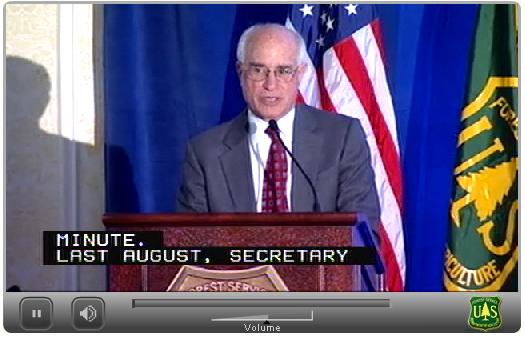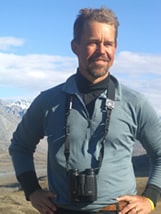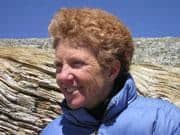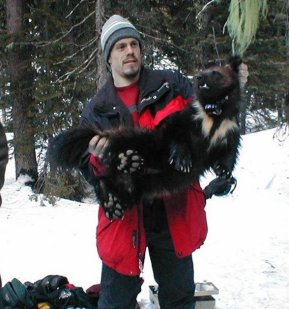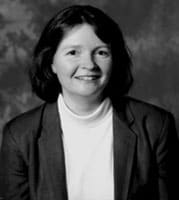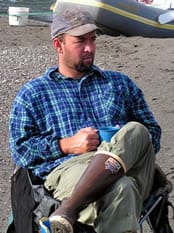The fourth panel at the science forum talked about the social, culural and economic dimensions of planning.
Mike Dockry,  a Forest Service liason with the College of the Menominee Nation in Wisconsin, began by describing the difficulties in defining sustainability. (slides pdf) After decades of discussions, there is still disagreement across disciplines, perceptions and experience, cultural understanding, time and spatial scales . Dockry quoted a definition from the 1987 Brundtland report saying that sustainability is meeting the needs of the present without compromising the ability of future generations to meet their needs. He said that definitions of sustainability come in two forms: “weak sustainability” assuming natural and manufactured capital are interchangeable, and “strong sustainability” assuming manufactured capital cannot replace some natural capital. Dockry said that in all sustainability definitions, it bridges humans with the environment, it integrates the social and the scientific, it describes what people collectively want and what is ecologically possible; and it integrates scientific and societal information in an iterative rather than a linear process.
a Forest Service liason with the College of the Menominee Nation in Wisconsin, began by describing the difficulties in defining sustainability. (slides pdf) After decades of discussions, there is still disagreement across disciplines, perceptions and experience, cultural understanding, time and spatial scales . Dockry quoted a definition from the 1987 Brundtland report saying that sustainability is meeting the needs of the present without compromising the ability of future generations to meet their needs. He said that definitions of sustainability come in two forms: “weak sustainability” assuming natural and manufactured capital are interchangeable, and “strong sustainability” assuming manufactured capital cannot replace some natural capital. Dockry said that in all sustainability definitions, it bridges humans with the environment, it integrates the social and the scientific, it describes what people collectively want and what is ecologically possible; and it integrates scientific and societal information in an iterative rather than a linear process.
A key component of sustainability is adaptation and learning. It relies on successful adaptation to changing conditions across time, location, and context. It empowers participation in the decision making. We need to collaborate among different perspective, and the Forest Service even needs to collaborate within the agency. Dockry said that we need to understand different perceptions about sustainability and the values. Uncertainty is inherent in complex ecological and social systems, and it requires an informed social dialogue for decisions.
Dockry showed some sustainability models. One has a three legged stool with the natural environment, the economic environment, and healthy communities. This type of model leans toward the category of weaker sustainability models. A strong sustainability model shows a nested approach, with the economy nested within the society nested within the environment.
He then turned to the model he has used at the College of the Menominee Nation in Wisconsin. This is a reservation where you can see the linear boundaries of its dense vegetation on satellite imagery. He said that the Nation has been cutting timber since 1854, and they have their own sawmill. In the mid 90s the Sustainable Development Institute came together to look at the Menominee, bringing academics, tribal leaders, and tribal members together to understand sustainability. The model they developed depends on six interactive and dynamic dimensions, with human communities in every one of these factors: (1) land tenure and sovereignty (how decisions are made); (2) the natural environment; (3) institutions, including informal clan structures or decisionmaking institutions, and formal instutions like colleges; (4) technology, from traditional harvest technologies to modern technologies such as GIS; (5) the economy, at all scales from local, regional, national, international; and (6) human perception, activity and behavior – how the group perceive and behave.
Dockry said that sustainable development is a process of recognizing these elements and balancing the tensions within and among them. As tensions are relieved, new tensions arrive, or old tensions come back. Dockry said that sustainable development is a continual process, and the Menominee have balanced the tensions through the idea of “Menominee Autochthony” – a profound sense of place. The model has been used to develop a narrative, both quantitative and qualitative, to understand change over time, and to understand intersections among model elements. It has been used to set future goals and develop solutions, while gathering stories to understand the sense of place, and data to understand the environment, economy, demographics and trend. Dockry said that the act of creating a narrative actually fosters collaboration. The model is based on Menominee experience, it can be used to assess past and present situations and develop future solutions; it can be used by researchers, planners, and communities; and the model can incorporate scale time and complexity.
Dockry said that the planning rule should mention the need for scientific information and models, and data from local and national scales (e.g. the National Report on Sustainable Forests, and inventory and maps). He said that indicators projects are a good source of information. The rule should include qualitative and quantitative social science and humanities in the process, and make social sciences an explicit part of planning rule. We need to recognize the social nature of science and decision making; what variables we use – how we approach our own disciplines (the social elements). Decisionmaking is fundamentally social. Collaboration requires learning and flexibility because of diverse public stakeholders, the need for internal agency collaboration, and tribal collaboration (government to government). The rule needs to allow each forest plan to define what sustainability means to that forest. There are different definitions, but we often will be talking about the same things.
Roger Sedjo,  a senior fellow at the Resources for the Future, titled his presentation: “the Forest Service planning rule – please no not again.” (slides pdf) Sedjo reflected on his experience in previous rulemaking processes, including his participation on the 1999 Committee of Scientists. He said that once we get into the planning rule and planning process, it’s very rarely science – it’s usually values. The only exception is viability which the 1999 Committee chewed on the for a long time, but was subsequently disregarded.
a senior fellow at the Resources for the Future, titled his presentation: “the Forest Service planning rule – please no not again.” (slides pdf) Sedjo reflected on his experience in previous rulemaking processes, including his participation on the 1999 Committee of Scientists. He said that once we get into the planning rule and planning process, it’s very rarely science – it’s usually values. The only exception is viability which the 1999 Committee chewed on the for a long time, but was subsequently disregarded.
Sedjo described the frustration that the Forest Service has experienced with forest planning. He mentioned the backlog of plan revisions not getting done. He referenced the Tongass planning effort, which has been revised, litigated, and appealed for 25 years and is still not settled. He said that even when we get planning rules done, we rarely get through planning processes. Sedjo pointed out early critisms of RPA and NFMA, which were legislation to plan, but not to implement the plan. RPA and NFMA identifed multiple-use outputs to be produced, but gave little guidance on how much of each output and the tradeoffs.
Sedjo said that there has been little ability to get consensus. Often groups did not participate in the process but challenged or litigated at the end . The whole process bogged down. Sedjo said that there has always been wide agreement that the planning process needs to be made simpler, less costly, more user-friendly, and understandable to the public. He said that former Forest Service Chief Max Peterson wanted to insulate the process from both political and legal review. But Sedjo thought the 1999 COS said to do even more planning, essentially throwing the Forest Service “an anvil instead of a liferaft.”
Over time, Sedjo said that the Forest Service was able to balance the timber industry, environmentalists, and recreationists against each other. He cited Paul Culhame’s 1981 book which explained this balance of power notion, how the agency did a masterful job in balancing these groups, and for a long time the Forest Service was able to maintain the balance. But Sedjo said there was a demise of this balance of power in the 1980s, in what are often called the timber wars, which the environmentalists won. Timber interests were pushed out of the National Forest System, and as their interests became less, the overall conflicts lessed. Although the forest industry has stayed around, Sedjo said that there is now a stronger interest in this rulemaking by environmentalists. He pointed out that 35% of the audience were representing environmental groups. Because of the narrower constituency, Sedjo thought there might be a basis for consensus of the remaining players.
Sedjo mentioned the problems identifying a mission for the Forest Service. He quoted previous Chief Max Peterson who said the Forest Service needs a new mission, and previous Chief Jack Ward Thomas who said the Forest Service needs a new mission from Congress. Sedjo said that clearly a planning process needs some objectives and consensus goals. If you don’t know where you’re going, any road will get you there. But Sedjo said that perhaps we do have the basis for a new mission or a new consensus. Since around 1990 the Forest Service has been mostly about custodial management, specifically attention on wildfire control. Regarding a new consensus, we might find one, not available in the past, around carbon sequestration benefits to climate change, wildlfire control, water, biodiversity, or maybe a few others. Later in the discussion period, Sedjo said that the tradeoffs are a lot smaller than before. Those old tradoffs in the past are now more manageable, which is easier for the various interests.
Sedjo cited Bowes and Krutilla’s 1989 book that said that National Forests could be viewed as a “forest factory” capable of generating a variety of services, as called for in legislation, with the objective to generate a set that would maximize social income. Since many of the values were non-market, you could use contingent valuation techniques. Subsequently, we went into the era of ecosystem management, and the emphasis shifted from the “outputs” to the “factory”. The old system focused on the eggs, and now ecosystem management shifted the focus to the goose laying the eggs. It was the “body beautiful” goose. Today we have the basis for describing some sort of system of ecosystem services. We now have markets for carbons, although the Copenhagen Climate Conference went nowhere with this. Other values can be determined by markets (timber, grazing, perhaps recreation and water) , but questions remain about wildlife or biodiversity.
Randall Wilson  from Gettyburg College spoke about the social-economic context of planning decisions. (slides pdf) He said that social-economic dimensions of rural communties are often linked to local natural environments. The concept of “place” is important in collaborative processes. Wilson said he studies what to make of these contexts and how they can be identified, measures, and incorporated into planning.
from Gettyburg College spoke about the social-economic context of planning decisions. (slides pdf) He said that social-economic dimensions of rural communties are often linked to local natural environments. The concept of “place” is important in collaborative processes. Wilson said he studies what to make of these contexts and how they can be identified, measures, and incorporated into planning.
Wilson described regional and global processes at a larger scale. He said that the literature on the New West looked at declining traditional resource extraction industries, risks to service sector economies (tourism), and an influx of ex-urban amenity migrants leading to habitat fragmentation, wildfire risk in the urban interface, risking tensions,and land use conflict. These processes are also seen elsewhere across the U.S. Wilson said that there is an uneven geography of the New West. The most advanced New West communities receive the most in-migration and economic growth. They have an emerging concentration of wealth and urbanization. This is in contrast with the majority of rural communities remaining dependent on resource extractions. Some communities are advanced New West, others have one foot in the old west and the other in the new west, while others are still dependent on resource extraction communities.
Wilson looked at how these diverse place-based contexts linked up with collaborative planning efforts. His metrics included the social-environmental context, management priorities developed in the collaborative processes, and the form and structure of the process. He gave the example of the Greater Flagstaff Forest Partnership, which he characterized within a New West context. There is rapid urbanization, a diversified economy, and an emphasis on recreation and tourism. The management priorities from the process were ecological restoration and wildfire risk. The form and structure of the collaboration was formalized, with lots of participants with institutional representative. Wilson then talked about the Ponderosa Pine Forest partnership in Southwest Colorado, which he characterized as a transitional context. Ecological restoration was coupled with economic development for viable local industries. Collaboration had a less formal structure, and informal decisions and individual relationships important. Finally, Wilson talked about the Catron County Citizens Group in New Mexico, with a focus on extractive industries and intense community conflicts. Participants looked to improve community capacity with open participation and a moderator.
Wilson described a “three legged stool”: economic development, ecological health, and social equity/commmity capacity/cultural heritage. The place-based social-environmental context informs the planning process, including public participation, the facilitation and scoping process; and defining forest planning priorities, guidelines, and standards. Wilson says that Forest Planning assists rural communities, in the process itself, in the development of social capital and cohesion, and collaborative learning. Finally plan implementation can make a difference to communties.
Wilson urged attention about the terminologies in forest planning: how public participation and collaboration are defined, how the definition of sustainability stretches to political, economic and social factors, and how monitoring is defined so that local communities take a role in that process.
Spencer Phillips,  an economist with the Wilderness Society, emphasized that recreation is but one ecosystem service among many, and recreation is connected to these things. (slides pdf) The attention should be on both recreational carrying capacity and (not or) ecosystem sustainability. They need to go together hand and glove – we need both. The tools and concepts need to evolve – things have changed since 1982 – and communities have changed. Phillips talked about the principles of the Society to connect people to nature, referencing their comment letter on the planning rule NOI. He said that recreation is about connecting people to nature – they don’t care about the specifics of nutrient cycling but what the forest looks like when they are there. People want to conserve and respect our natural, historic and cultural heritage, while experiencing enjoyable and safe recreation. He noted that fewer people today grew up in the forest or on the farm with the outdoor cultural tradition, so it’s important to make a connection.
an economist with the Wilderness Society, emphasized that recreation is but one ecosystem service among many, and recreation is connected to these things. (slides pdf) The attention should be on both recreational carrying capacity and (not or) ecosystem sustainability. They need to go together hand and glove – we need both. The tools and concepts need to evolve – things have changed since 1982 – and communities have changed. Phillips talked about the principles of the Society to connect people to nature, referencing their comment letter on the planning rule NOI. He said that recreation is about connecting people to nature – they don’t care about the specifics of nutrient cycling but what the forest looks like when they are there. People want to conserve and respect our natural, historic and cultural heritage, while experiencing enjoyable and safe recreation. He noted that fewer people today grew up in the forest or on the farm with the outdoor cultural tradition, so it’s important to make a connection.
He encouraged public participation, the attention to net economic benefits (is the money staying in the economy), agency budgets (recreation is the main economic output of public lands), monitoring, transportation systems (more than roads – getting to the right place with the right experience), and thinking of using infrastructure to enhance connection with nature. He said that recreation infrastructure is not just the built infrastructure, but also the information infrastructure.
Phillips said the planning rule must make recreation a “substantive principle”, and suggested a full accounting for impacts both on and of recreation. He encouraged the use of recreational planning concepts , tools, and models and systems thinking beyond simple benefit/cost analysis. He urged Forests to focus on their niche, which may be quiet recreation. There are opportunities on private lands in different ways. He said this is already suggested in the 1982 planning rule which describes an identification of the uses, values, products, and services that National Forst System lands are uniquely suited to provide. As the niche is identified, the planning process should determine how to add value to that niche. Phillips used an example of the planning around Roslyn, Washington. A partnership looked at what ecosystem services were provided on this parcel, then how to manage use to account for those services. You may have to separate uses and zone for motorized, mechanized and non-motorized use.
Phillips concluded by emphasizing the meaning of recreation, with his parting word “play.” Recreation is “re: creation.” People make a connection when they see where their water and game come from, and it’s easier to understand when you make that connection. Also “re-creation” is to make something new.

















